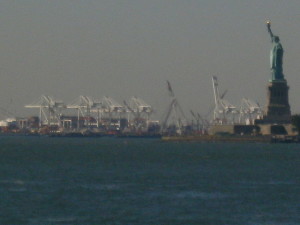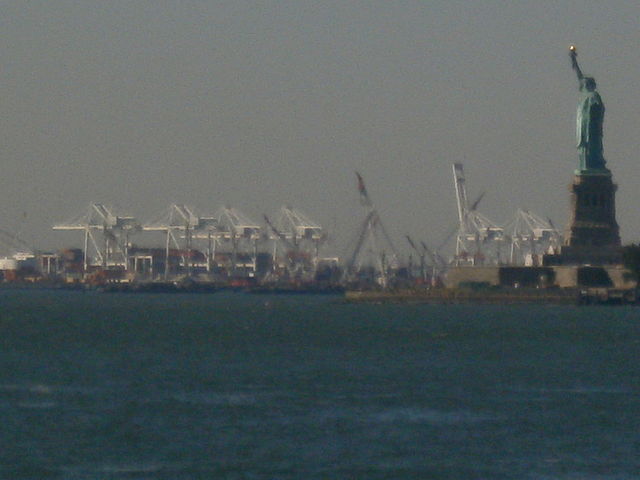 The U.S. East Coast of North America (USEC) is seeing a rise in Asia cargo volumes on both legs of the trade following the deterioration of labor relations at the U.S. West Coast (USWC) ports in late 2014 that has led to worsening congestion on the western seaboard, according to a new report from Drewry.
The U.S. East Coast of North America (USEC) is seeing a rise in Asia cargo volumes on both legs of the trade following the deterioration of labor relations at the U.S. West Coast (USWC) ports in late 2014 that has led to worsening congestion on the western seaboard, according to a new report from Drewry.
On a year-on-year basis, November 2014 eastbound trade grew 13.1%, the second highest recording for the year despite being regarded as a slack season month. Traffic from Asia along the main USEC artery rose 14.6% year-on-year in November, an uplift that was matched by a similar percentage gain in December.
For the whole of 2014, Asian exports entering all U.S. gateways increased by 6.3% to 13.9 million twenty-foot equivalent units (TEUs) with East Coast volumes up 10.5% compared to a 4.8% rise in West Coast flows. The much smaller US Gulf Coast market saw an advance of 7.8%.
During the fourth quarter, the gap between EC and WC growth widened appreciably with imports landed on the U.S. western seaboard posting an uplift of only 3.6%, while EC loads rose by 13.4%.
“If one works on the premise that under normal circumstances cargo growth rates should be broadly similar across the US eastern and western seaboards then it would appear that as much as some 150,000 TEUs could have been diverted to the USEC during 2014,” said Drewry.
In import loaded volumes, most of the main USEC terminals experienced strong gains in 2014, especially during the last three months when USWC labor contract negotiations reached an impasse and the ILWU seemingly stepped up its work go-slow campaign.
Charleston import volumes from all origins in 2014 increased by 12.9% against a year earlier with fourth-quarter levels up by 15.5%. Savannah’s full-year import volumes climbed 12.2% with a stronger spurt in the final three months of the year to grow 22%. Full inbound units handled at Norfolk (including Portsmouth) rose by 9% across the full year and hit the 1-million TEU mark for the first time, but fourth-quarter volumes did were less strong than in Charleston and Savannah.
But Drewry does not foresee any long-term preference for ECNA due to cost reasons. “The current high eastbound ECNA spot rates will probably legislate against any permanent mass defection of cargo away from the West Coast ports when normal operations returns to those terminals,” it said.
The mid-January increase elevated rates to US$4,700 per 40-foot unit which is some $2,700 higher than a WCNA ocean freight. Another $600 hike has been declared for February 9, coinciding with the pre-Chinese New Year cargo surge, which will propel spot rates above $5,000 for the first time in many years.
The upward momentum of the eastbound freight market had the Transpacific Stabilization Agreement carriers announcing that they have revised the minimum guideline for May 1, 2015 service contract rates from $3,500 to $3,800. For most East Coast importers, this represents a rise of almost $1,000 or a 33% increase on present ocean freight costs.
Photo: Hudconja





